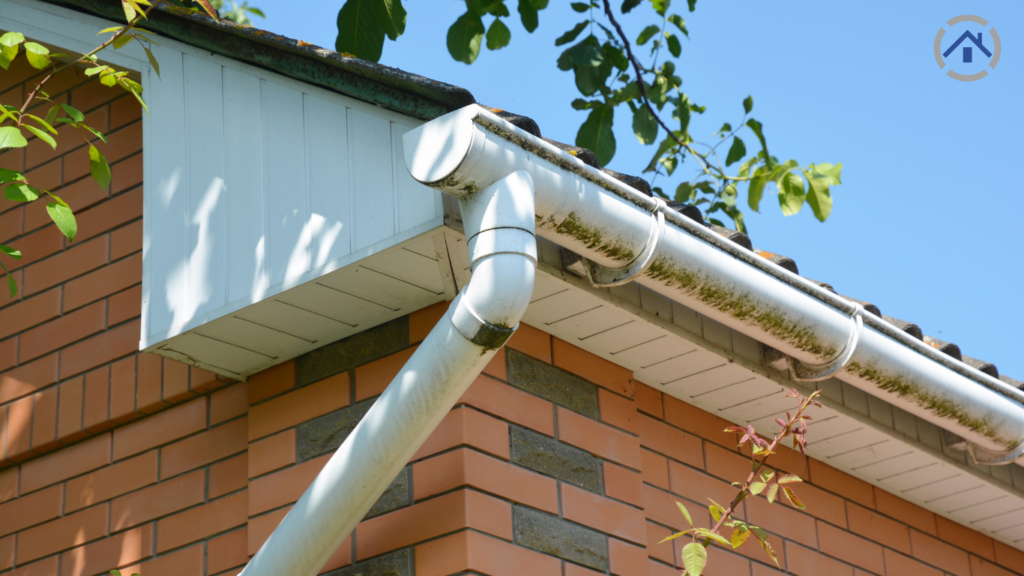
Gutters are often overlooked in home maintenance routines, yet they play a crucial role in protecting your home's structural integrity. Neglecting gutter health can lead to severe consequences such as water damage, basement flooding, and compromised stability. Recognizing the signs of gutter distress is essential to prevent costly repairs and ensure your home remains safe and dry. These vital signs indicate when your gutters need immediate attention, safeguarding your property from potential harm.



One of the first signs that your gutters may need attention is visible bowing or sagging. When gutters bow outwards, it's a clear indication that something is amiss. This bowing is often caused by the weight of accumulated debris and water, which can put undue pressure on the gutter system. Improper installation can also contribute to bowing gutters, as can the use of inferior materials. Addressing bowing gutters promptly is essential to prevent further damage to your home's exterior.
Another telltale sign of gutter distress is the presence of sitting water. If you notice water pooling in your gutters, it's a sign that they're not draining properly. Poor drainage can be caused by a variety of factors, including improper pitch or clogging from debris. Left unchecked, sitting water can lead to a host of problems, including mold growth, pest infestation, and damage to the gutter system itself.
Sagging gutters are a clear indication of structural issues that require immediate attention. This sagging is often caused by improper pitch, which prevents water from flowing towards the downspouts as intended. Excessive weight from debris and water accumulation can also contribute to sagging gutters. If left unaddressed, sagging gutters can lead to water overflow and potential damage to your home's exterior.
Proper gutter pitch is essential for ensuring that rainwater flows away from your home's foundation as intended. If your gutters are pitched incorrectly, water may not drain properly, leading to pooling and potential damage. This improper pitch can result from various factors, including poor installation or settling of the gutter system over time. Regular inspections and maintenance can help identify and correct any issues with gutter pitch before they cause significant damage.
Accumulation of debris in your gutters is a common issue that can impede water flow and lead to clogging. Leaves, twigs, and other debris can quickly build up in gutters, especially during the fall months. This buildup not only prevents water from draining properly but can also attract pests and rodents looking for nesting sites. Regular gutter cleaning is essential for preventing debris buildup and ensuring the proper functioning of your gutter system.
Water stagnation in gutters is a red flag that should not be ignored. This stagnation can occur due to improper drainage or blockages caused by debris. Left unchecked, stagnant water can lead to mold growth, attract pests, and cause damage to the gutter system and your home's exterior. Regular gutter maintenance, including cleaning and inspection, is crucial for preventing water stagnation and preserving the integrity of your home.
Visible leaks or holes in your gutters are a clear indication that immediate attention is needed. These leaks can occur due to deterioration of the gutter material over time or damage caused by debris or severe weather. Ignoring gutter leaks can lead to water infiltration into your home, causing damage to walls, ceilings, and insulation. Prompt repair of gutter leaks is essential for preventing further damage and preserving the structural integrity of your home.






When it comes to replacing your gutters, there are a variety of options available to suit your budget and aesthetic preferences.
Ideal for dry climates, aluminum gutters offer durability and affordability. However, their lightweight nature makes them susceptible to warping in extreme temperatures. While they typically last around twenty years, they may require frequent repairs in harsher climates.
Perfect for wet climates, copper gutters are corrosion-resistant and can handle significant water volumes. Their natural properties make them resistant to algae growth, making them ideal for humid environments. Over time, they develop a greenish patina, adding a unique aesthetic to your home.
Suitable for both wet and dry climates, zinc gutters offer excellent durability and corrosion resistance. They develop a patina over time, enhancing their appearance. With proper maintenance, zinc gutters can last well over fifty years, making them a valuable addition to any home.
An affordable option for homeowners, vinyl gutters come in various colors and styles to match your home's aesthetic. However, they have the shortest lifespan, ranging from 10-20 years, particularly in warm and humid climates where algae growth can occur if not maintained properly.
Resilient and durable, stainless steel or galvanized steel gutters are suitable for wet climates. They are resistant to rust and warping, making them a long-lasting option. However, the protective coating may wear over time, reducing their lifespan to around 20 years.
While some minor gutter issues can be addressed with DIY methods, there are times when it's best to call in a professional. If you notice significant bowing, sagging, or signs of structural damage, it's essential to seek professional assistance. Likewise, if you're unable to safely access your gutters or if you're unsure how to properly diagnose and address the problem, it's best to leave it to the experts. A qualified gutter technician can assess the situation, identify any underlying issues, and provide appropriate repairs or replacements to ensure your gutter system functions effectively.


Paying attention to the signs that indicate your gutters need immediate attention is essential for protecting your home from water damage and other costly issues. Regular inspection and maintenance of your gutter system can help identify and address problems before they escalate, ensuring that your home remains safe, dry, and structurally sound for years to come. Don't wait until it's too late—take action today to protect your home and your investment.